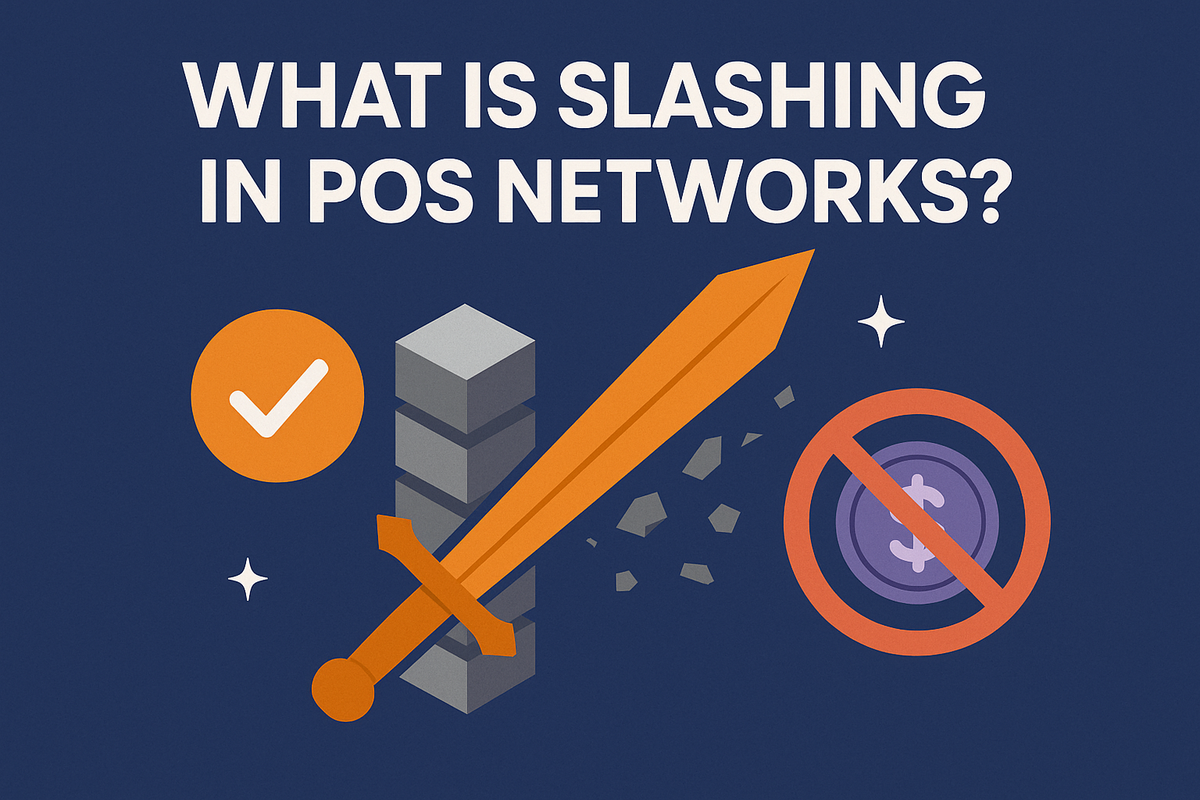What is Slashing in PoS Networks?

Many blockchains today use Proof of Stake (PoS) to secure their networks. In PoS, people called validators lock up some of their cryptocurrency (called staking) to help confirm transactions and keep the blockchain running smoothly.
But if a validator tries to cheat, makes mistakes, or behaves badly, the network punishes them by taking away part of their staked coins. This punishment is called slashing.
Why Do Networks Use Slashing?
Slashing helps keep the blockchain honest and safe by:
- Preventing cheating or fraud
- Making sure validators stay active and do their work
- Protecting users and their transactions
Validators risk losing money if they break the rules, so they are motivated to behave correctly.
How Does Slashing Work? Examples from Real Projects
Here are some real crypto projects that use slashing, with examples of what causes it:
1. Ethereum 2.0
Ethereum’s upgrade to PoS (called Ethereum 2.0) uses slashing to punish bad behavior:
- Double Signing: If a validator signs two different blocks at the same time (which is cheating), they lose a big chunk of their stake. This stops validators from trying to confuse the network.
- Surround Voting: This is a more technical rule where a validator tries to vote on blocks in a way that can harm consensus. If caught, they get slashed.
Ethereum slashing can be quite harsh because the network wants to stay very secure.
2. Cosmos
Cosmos is another popular PoS blockchain. It also uses slashing to keep validators honest:
- Downtime: If a validator is offline or unreachable for a certain period, a small part of their stake is slashed. This encourages validators to maintain reliable servers.
- Double Signing: Signing conflicting blocks causes a larger penalty.
Cosmos often slashes around 5% of the validator’s stake for double signing, which is a serious punishment.
3. Polkadot
Polkadot is a network that connects different blockchains. It uses slashing too:
- Validators get slashed for equivocation (signing two blocks at the same time).
- Validators that cause network security risks lose a part of their stake.
- Polkadot also punishes validators that act maliciously by removing them from the active validator set temporarily or permanently.
What Happens to Validators After Slashing And Why Is It Important?
- Validators lose some or all of their staked coins depending on how bad their mistake was.
- In some cases, they can be kicked out of the validator group (called "jailing") for a period of time.
- Slashing makes validators more careful, because losing money is a big deal.
Without slashing, validators might cheat or ignore their duties because there’s no strong consequence. Slashing keeps the network honest and helps protect everyone using it. It’s a way to turn good intentions into real actions backed by financial risks.
Final Thoughts
Slashing is a powerful tool used by Proof of Stake (PoS) blockchains to keep their networks secure and trustworthy. By putting validators at financial risk for bad behavior, slashing ensures that they act responsibly, stay online, and follow the rules. It’s like a built-in security guard that punishes cheating and laziness.
For validators, this means they must be very careful—run reliable systems, stay honest, and avoid mistakes. For regular users and stakers, slashing means the network is better protected, and the value of their assets is safer.
As PoS blockchains grow in popularity, slashing will continue to play a key role in making sure these systems work fairly and securely. Whether you're a validator or just someone staking your coins, it's important to understand slashing and how it keeps the crypto ecosystem healthy.



Comments ()